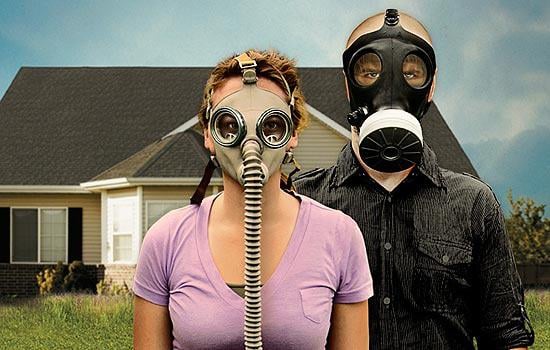
A father and son sit silhouetted against a fire, tending the flame to stave off the encroaching darkness of the woods around them. The father looms over his son, congratulating him on a job well done surviving his first night in the forest. He goes on to say this is a coming of age, and that ever since his son was born, he has been preparing for this moment. His eyes welling up with tears, the father presents his son with the one thing that, more than anything else, symbolizes his growth as a man and as a survivor: his son’s own preserved umbilical cord.
That’s right: his own umbilical cord. You, being a normal, stable person, might double-take at the sheer lunacy of such a gift. But to the collection of wackos, nutjobs and generally unhinged individuals that make up National Geographic’s hit reality show “Doomsday Preppers,” it’s as natural as breathing. Or storing 10,000 cans of cat food for your personal consumption to prepare for the impending apocalypse.
Having premiered in February 2012, “Doomsday Preppers” follows the formula established by other smash-hit National Geographic garbage such as “Alaska State Troopers” and “Rocket City Rednecks” (which is neither national nor geographic, but I digress). For an hour each week, a film crew will follow three separate (but mostly Texan) “preppers,” analyzing how they plan to avoid disasters ranging from nationwide government takeovers to nuclear fallout to hyperinflation of the U.S. dollar.
Most of these crazies, er, preppers, construct their plans around some universal ideas: guns, food, shelter, guns, vehicles, guns, guns, more food and guns. The food I can understand. In fact, the show repeatedly makes the point that FEMA recommends each household have at least three days’ worth of non-perishable food. Perfectly reasonable. But owning 40 guns in a two-person household to defend all that food is not so reasonable. I honestly wouldn’t be surprised to hear the majority of the firearms in this country are in the hands of preppers. And having spent the last year watching them pontificate on TV about the merits of their personal arsenals, gun control laws are looking to me like a better and better idea all the time.
But guns and food pale in comparison to the elaborate fortresses these preppers cook up, either at home or in secret “bug-out” locations. These men and women spend millions of dollars on their disaster preps, from underground bunkers to retired school buses to $500,000 helicopters. For people who emphasize survival out in the post-apocalyptic wilderness, they sure know how to live in excess.
Despite all this, there is a reason “Doomsday Preppers” has become National Geographic’s most watched show: sheer entertainment value. I am sure there are some who view the program as educational, but I say they are missing the point entirely. I haven’t learned anything from watching two seasons of “Doomsday Preppers” other than the fact there are some truly twisted people in this country. And that if the apocalypse ever really does come, it will be best to steer clear of Texas.
